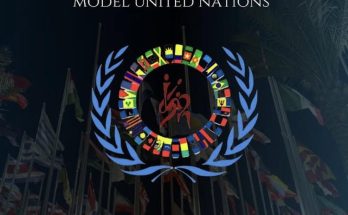 A tea stall hangs in the middle of the air. It is just a normal tea stall in the midst of a lonely highway. Dressed in a floral print sari, a woman stands at the counter as she gazes directly into the camera. One can almost sniff the tea brewing out of that picture on a hot, sunny afternoon.
A tea stall hangs in the middle of the air. It is just a normal tea stall in the midst of a lonely highway. Dressed in a floral print sari, a woman stands at the counter as she gazes directly into the camera. One can almost sniff the tea brewing out of that picture on a hot, sunny afternoon.
Elephants and camels adorned with elaborate velvet seats and pearls have always caught the fancy of foreigners. But this one is different. It lays on the ground — four lazy legs stretched wide apart on wet mud while his master splashes water over him.
‘Indian PALabras,’ the exhibition is a snapshot-journey of India by Rafa Gasso, a Spanish photojournalist and a traveler in love with India who has captured the soul and smell of this dazzlingly diverse nation in his photographs. The exhibit is on display at a gallery at Instituto Cervantes New Delhi till July 13.
India serves as a visual treat for people who wish to capture its poverty, dirt and squalor. However, India, for Gasso, is different. His is a vision that looks at India with a desire to explore and understand it. And, therefore, his photos never succumb to the age-old, stinky stereotypes that are often layered on India by the outsiders.
 Six years ago, when he came to India for the first time as a traveler, what struck him was chaos, noise, heat and crowd. And these are the first four words that emerge in his memory as he recalls the moment he reached India and confronted the nation on a hot, humid afternoon.
Six years ago, when he came to India for the first time as a traveler, what struck him was chaos, noise, heat and crowd. And these are the first four words that emerge in his memory as he recalls the moment he reached India and confronted the nation on a hot, humid afternoon.
But his perspective has changed over the years. “India is not an alien land. It isn’t difficult to understand it. All you need to do is look, look and look,” the Spanish photographer told India Writes Network, www.indiawrites.org. This is exactly how he has discovered it, too. Language is hardly a barrier: the Spanish photographer does not know Hindi and is not very comfortable with the English language too — the two languages that are most widely spoken in India – but this has not prevented him from forming a lasting bond with this country.
He admires people’s ability to accept anything and everything with a smile here. This, he says, is something that he has imbibed from India while discovering it. “The purity of life,” as he calls it, is the quintessential element of India’s identity for him.
He has travelled far and wide, from Hampi and Kerala in the South to Varanasi, Kolkata and Siliguri in the east and Pushkar in the west. However, out of all the places that he has visited in India, he feels that the holy city of Varanasi in Uttar Pradesh defines this nation. The striking visuals of the burning of pyres on the banks of River Ganga in Varanasi, he recounts, has helped him in unraveling the Indian philosophy of life and death. “Life comes to a full circle —- from birth to death,” he remarks pointing to the circle of Karma (deed) and Dharma (duty) in the Indian philosophy.

 This understanding of the the Indian culture is reflected in his multi-hued photographs. Poverty and filth are not the only adjectives that define India. Through his viewfinder, Gasso takes you into the veins and blood of a country that is young, vibrant, colorful, modern and old at the same time.
This understanding of the the Indian culture is reflected in his multi-hued photographs. Poverty and filth are not the only adjectives that define India. Through his viewfinder, Gasso takes you into the veins and blood of a country that is young, vibrant, colorful, modern and old at the same time.
Author Profile
- India Writes Network (www.indiawrites.org) is an emerging think tank and a media-publishing company focused on international affairs & the India Story. Centre for Global India Insights is the research arm of India Writes Network. To subscribe to India and the World, write to editor@indiawrites.org. A venture of TGII Media Private Limited, a leading media, publishing and consultancy company, IWN has carved a niche for balanced and exhaustive reporting and analysis of international affairs. Eminent personalities, politicians, diplomats, authors, strategy gurus and news-makers have contributed to India Writes Network, as also “India and the World,” a magazine focused on global affairs.
Latest entries
 DiplomacyApril 10, 2024Diplomat-author Lakshmi Puri pitches for women power at LSR
DiplomacyApril 10, 2024Diplomat-author Lakshmi Puri pitches for women power at LSR India and the WorldApril 6, 2024UN envoy pitches to take India’s solutions to the world stage
India and the WorldApril 6, 2024UN envoy pitches to take India’s solutions to the world stage CultureApril 5, 2024Youth in Diplomacy: Making it Matter with LSR Model UN 2024
CultureApril 5, 2024Youth in Diplomacy: Making it Matter with LSR Model UN 2024 India and the WorldMarch 28, 2024India to China: Normalization of troops deployment imperative for restoring ties
India and the WorldMarch 28, 2024India to China: Normalization of troops deployment imperative for restoring ties







